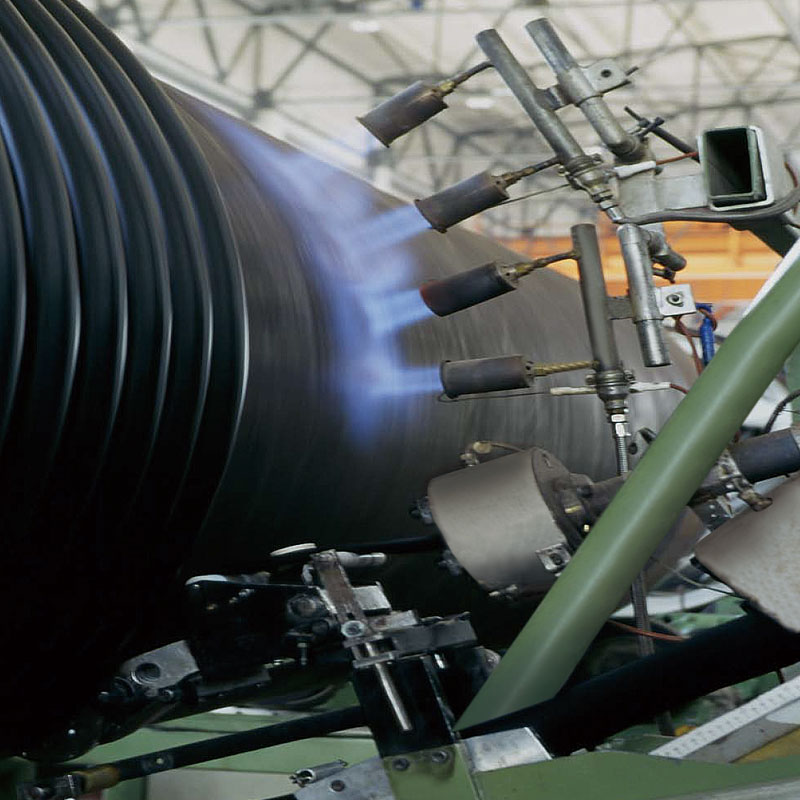Advancing Infrastructure: Extrusion Equipment for Type B Structural Wall Winding Pipe
2023-10-17
Introduction
The development of modern infrastructure heavily relies on innovative technologies and materials. Type B Structural Wall Winding Pipe, a significant advancement in the world of pipelines, plays a pivotal role in ensuring the integrity and durability of various underground and above-ground systems. In this blog, we will delve into the extrusion equipment used in the manufacturing of Type B Structural Wall Winding Pipe and explore its essential contributions to infrastructure development.
What is Type B Structural Wall Winding Pipe?
Type B Structural Wall Winding Pipe is a specialized pipe designed for applications that require high structural integrity and corrosion resistance. It is commonly used in the construction of sewage systems, drainage systems, stormwater management, and even in certain industrial settings. The distinguishing feature of this pipe is its unique design, consisting of an inner structural layer and an outer corrosion-resistant layer, providing exceptional strength and protection.
Extrusion Equipment: The Heart of Manufacturing
Manufacturing Type B Structural Wall Winding Pipe is a complex process that requires specialized machinery, with extrusion equipment playing a central role. This equipment is responsible for creating the pipe's structure and ensuring its consistent quality. Here's how it works:
1. Resin Extrusion: The process begins with the extrusion of resin materials. High-density polyethylene (HDPE) or other suitable materials are melted and forced through a die, creating the inner structural layer of the pipe. This layer is essential for providing the pipe's strength and rigidity.
2. Winding Process: After the inner layer is extruded, it passes through a winding station where reinforcement materials, such as continuous fiberglass rovings, are applied. The winding process ensures that the pipe can withstand external loads and pressure.
3. Outer Layer Extrusion: Once the reinforcement materials are in place, the extrusion equipment adds an outer layer of resin. This layer serves as a protective barrier, shielding the pipe from corrosion and environmental factors.
Key Benefits of Extrusion Equipment
1. Precision and Consistency: Extrusion equipment ensures that Type B Structural Wall Winding Pipe is manufactured with precision and consistency. This is crucial for maintaining the structural integrity and performance of the pipes, especially in critical applications like sewage and drainage systems.
2. Durability and Longevity: The extrusion process results in pipes that are highly durable and resistant to corrosion. This longevity is essential for minimizing maintenance and replacement costs over the life of the infrastructure.
3. Customization: Extrusion equipment can be tailored to produce pipes of various sizes and specifications, allowing for customization based on the specific requirements of each project.
4. Environmental Benefits: Many extrusion machines are designed to be energy-efficient and produce minimal waste, aligning with sustainable manufacturing practices.
Conclusion
Extrusion equipment for Type B Structural Wall Winding Pipe is a vital component in the creation of robust and long-lasting infrastructure. By combining the strength of structural layers with corrosion-resistant properties, this type of pipe offers a sustainable and reliable solution for various applications in the construction and industrial sectors. As our infrastructure needs continue to evolve, innovative technologies like Type B Structural Wall Winding Pipe and the advanced extrusion equipment used in its production will play a significant role in shaping the future of our cities and communities.



